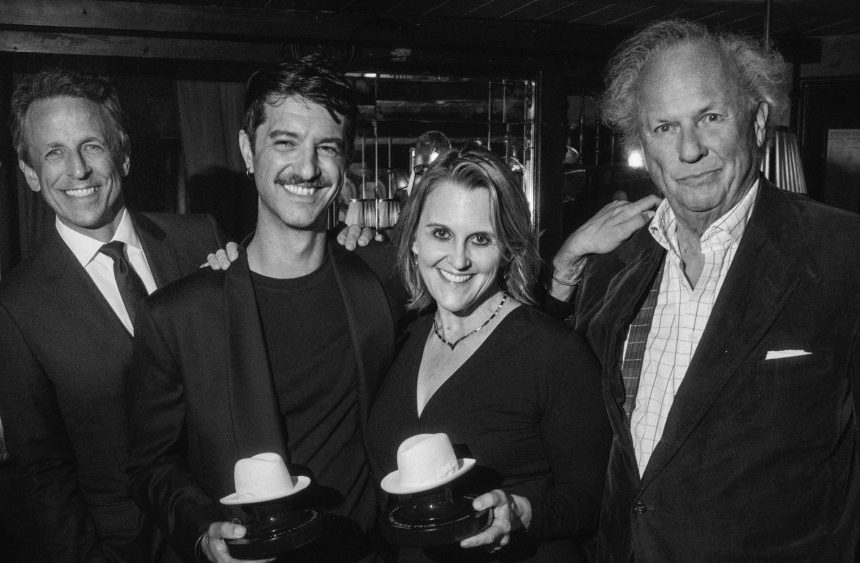The news that almost one in six cat owners in the UK use a harness – if indeed you can call it newsworthy to anyone except cat people such as myself – brought forth a mix of emotions. As with anything that makes me think of my mad little cat, Mackerel, they were a cocktail of guilt, bafflement and love.
Let’s start with guilt. The charity Cats Protection has warned against the use of harnesses – as in, leads – because of how they cause cats undue stress by suppressing their flight response and making them feel trapped. I did not know this when I bought a harness for Mackerel, though I worked it out soon enough by her reaction, which was to play dead the second you put her in it. Now, I didn’t buy a harness without reservations, although rather shallowly it was my personal image that ultimately caused me to ditch it. Here is what I wrote in 2020 (from my book The Year of the Cat, which was all about how I adopted Mackerel during an intense period of maternal broodiness and pandemic-induced isolation):
“Sometimes I see myself from the outside: a childless, thirtysomething freelancer with a cat on a lead that won’t cooperate, and I can’t help but note that this is not how I pictured my life turning out.”
They have a way of humbling you, cats, although admittedly Mackerel has always been an oddball. She drinks coffee, for instance, and once watched the whole of Saltburn (about the appropriate target-audience level for that film, in my opinion). But let’s not get sidetracked. The reason I felt bafflement when I read about the one in six cat owners using harnesses is because it made me wonder: just who are all these cooperative, compliant cats that obediently trot down the pavement alongside their humans? I see them on the streets sometimes and always shake my head in disbelief. It’s the same feeling I have whenever I see a photo of a cat wearing a silly little costume: namely, how does its person still have their eyeballs?
In my case, it’s really not an unreasonable question. When my son was still a baby, I had to go to Moorfields eye hospital because Mackerel had scratched my sclera while I was trying to nap. She had seen my rare moment of repose as an opportunity to hunt my flickering eyelid. Considering what she’s capable of when I am lying down, one can only imagine her reaction if you tried to dress her up as the pope. So, I have long accepted my lack of dominion over her.
Much like Cats Protection, I do have strong opinions about the rights of cats to self-determination. Raised in the countryside, I used to be strongly opposed to even the concept of an indoor cat, let alone the ridiculous idea of a cat on a lead. It seemed to me that it went against nature. Then I met Mackerel, who – after a too-early separation from her mother and an alarming visit to a vet for spaying whereupon he discovered that she didn’t actually have a uterus – simply refused to go outside. This despite being given ample opportunity. The lead was our attempt to acclimatise her to the great outdoors. Almost six years later, she is yet to cross the threshold of her own volition.
These days, for that reason, I try hard not to judge other cat people. Cat people love to judge one another, perhaps even more than parents do. More and more humans seem to be treating their pets as if they are their actual offspring (not helped by the vets who call you “Mum” and, hilariously, insist on giving them your surname). On a few occasions when out and about I have stared into a bassinet expecting to see a baby only to find, with a start, a cat or a small dog staring back. Worse, the other day my husband and I were crossing the road and he gestured towards a bloke wearing one of those infant carriers. “What a hideous baby!” he said. I was about to rebuke him when I looked closer and saw that the sling contained not a baby, but a small ginger cat.
I am as guilty as anyone of treating my cat as a surrogate child. Yet I do wonder if, just as children have less freedom than they used to, the same is becoming true of some cats. A part of me was relieved when Mackerel decided to be an indoor cat. The hazards facing cats – traffic, foxes, thieves, XL bullies, poison – haven’t changed, but perhaps our protectiveness has. Humans want to keep their precious “fur babies” safe. To lose a cat is, after all, real grief.
Nevertheless, as the saying goes, when you love something, you have to set it free. Even against your better judgment, it’s easier said than done. God knows, I’ve bloody tried.
after newsletter promotion


